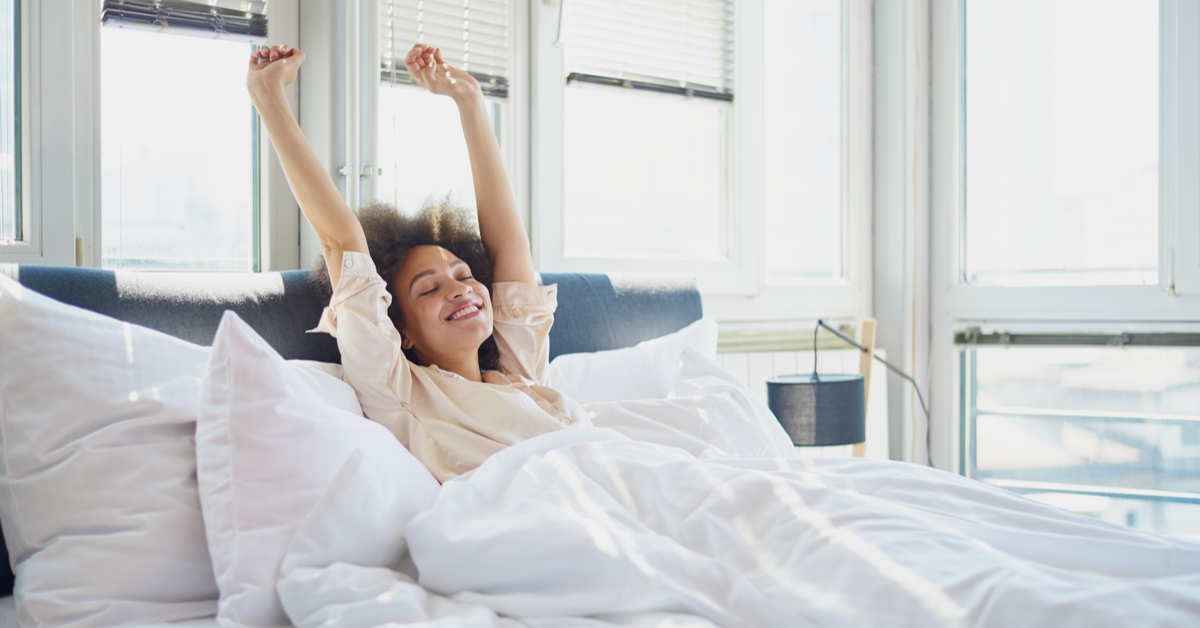Did you know that 1 in 2 Canadians has trouble falling asleep or staying asleep during the night? Today we’ll discuss why sleep is important, what the link is between sleep and pain, and we’ll share some practical strategies that can help you improve your sleep.
Why is sleep so important?
Sleep is an essential function. While you sleep, your body and mind recharge, leaving you refreshed and alert when you wake up. Without enough sleep, the brain is not able to function properly. Sleep also plays an important role in:
- Regulating emotions
- Learning
- Processing memories
- Performing tasks
- Helping the body remain healthy and recover from illness or disease
What is the link between sleep and pain?
You are likely aware that pain can affect your sleep. But did you know that the quality of our sleep can also impact our pain experience? Poor sleep quality, short sleep times, and interrupted sleep can lead to increased sensitivity to pain the following day.
This increased sensitivity can be due to our body sending more danger signals when we are sleeping poorly.
People with chronic pain frequently report changes in:
- Time needed to fall asleep
- Frequency of waking up throughout the night
- Sleep quality in general
What can you do to get a better sleep?
Sleep issues arise because our body or environment tells us that we should be awake. Luckily, we can adjust our environment or behaviours to promote better sleep.
It is important to try a few different strategies over time to learn what works best for you. If you continue to experience sleeplessness over a long period of time, please contact a health professional.
Manage your thoughts
Many of us find our thoughts wander at night and struggle to “turn our brain off”. Did you know that the brain works to solve problems as we sleep? That is where the term “sleep on it” came from. If we wait until the next day to problem solve, we will be more effective due to our brain working as we sleep.
Try the following strategy to manage your thoughts at night. Keep pen and paper on your nightstand. If you can’t sleep due to your thoughts, write these thoughts down. You can address these thoughts the following day. If these thoughts continue to occur, remind yourself that you have written them down and will get to them tomorrow.
Wake up at the same time every day
Research tells us that it is important to wake up at the same time every morning. Going to bed at the same time every night isn’t necessarily effective. Why not? Researchers have found that you should go to bed when you’re ready to go to sleep. So make sure to set your alarm for the same time each day.
Tip: Try to go to bed at the time you usually fall asleep. Do you toss and turn until 12am every night, then try going to bed at 12am instead of trying to force yourself to sleep at 10:30pm.
Do a body scan
This relaxation strategy helps us become more aware of our body and calms our nervous system. Try this 7-minute body scan.
Regulate your breath
What we do in a day impacts the way we sleep. It’s important to incorporate breaks to calm the body throughout the day. Try regulating your breath by making your breath longer, smoother and softer, this will help calm your body.
Create a night routine
Developing a routine of doing the same activities before you go to bed each night, can help promote better sleep. The routine will become a habit that acts as a signal, telling your body that it’s time to get ready to sleep. Limiting screen time before bed is also important, as the blue light can disrupt the sleep-wake cycle.
Tips:
- Create a relaxing pre-bedtime routine. Take a shower or back, listen to calming music, meditate, engage in a body scan or do breathing exercises
- Try using a blue light filter or blue light filter glasses when using devices as smartphones, tables, etc.
Change your nap duration
Many people like to take a nap when they get tired during the day. If you nap for too long, however, this can lead to increased daytime drowsiness and impact your ability to fall asleep at night.
Tips:
- Instead of napping, try getting some sunlight or engage in light activity such as walking
- If you do take a nap, try limiting it to 20 minutes
Improve your sleep environment
Did you know that cold temperatures can signal our body that it’s time for sleep and help us stay asleep? By sleeping in an environment that is too hot we disrupt this process.
It is also important to reduce light in our bedroom in preparation for sleep and throughout the night. Intermittent noise can be disruptive to our sleep by causing more awakenings throughout the night and interfering with our sleep stages.
Tips:
- Turn the heat down at night, or sleep with a fan to cool your bedroom down
- Use blackout curtains or and eye mask to reduce light
- Use ear plugs, a sound machine, or white noise app if you need to block out noises
If these strategies don’t work for you, an occupational therapist may help you devise some new strategies to get your sleep back on track.
This blog was written by Hailey Muir, an occupational therapy student at Queen’s University and originally appeared on Lifemark.ca.

